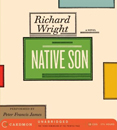Book Digest: May 5, 2008
Sigrid Nunez, whose novels I have enjoyed and admired, responds to my inquiry about what she’s been reading lately:
“I’ve been asked to teach a literature seminar in the Graduate Writing Program at the New School this fall. Thinking about ideas for a course, I remembered reading an article about Javier Marías in which he is quoted as follows:
In my books there is not only the action, the characters, the story, and so forth; there is reflection as well, and often the action stops. The narrator then makes a series of considerations and meditations. There is a tradition within the novel form, almost forgotten now, which embodies what I call literary thinking or literary thought. It’s a way of thinking which takes place only in literature—the things you never think of or hit upon unless you are writing fiction.
“I thought it might be interesting to teach a course on novels that include the kind of ‘literary thinking’ Marías is talking about. One of the first books that came to mind when I read the quote for the first time was Elizabeth Hardwick’s Sleepless Nights. And I remembered how, as a teacher, she used to say writers were the only people who ever really did think. Naturally, her book is on the list. So is Lynne Tillman’s American Genius, which I read when it came out last year, and I’ve been reading or rereading other novels to prepare for the course, including Woolf’s Orlando, Coetzee’s Diary of a Bad Year, W. G. Sebald’s Austerlitz, Kundera’s The Incredible Lightness of Being, and Nicholson Baker’s The Mezzanine. Marías himself can hardly be left out, and I plan to start off with Fever and Spear, the first volume of his ongoing novel, Your Face Tomorrow.
“I also happened recently to take along The Uncommon Reader, Alan Bennett’s comic novella about Queen Elizabeth II accidentally discovering the joy of reading, to entertain myself on a plane ride. At one point Bennett gives the Queen a reflection that nicely fits my Literary Thinking reading list: ‘Novels are not necessarily written as the crow flies.’”
So Brave, Young, and Handsome by Leif Enger

Enger’s debut novel, Peace Like a River, put him on the literary map and his new effort has reviewers incanting echoes of Huckleberry Finn, not to mention Kent Haruf, Annie Proulx, and Larry McMurtry. Two men, one an unexceptional family man, the other a fugitive, embark from Minnesota in 1915 to reunite outlaw Glendon Hale with his long-ago deserted wife in California. Add Charles Siringo as a former Pinkerton agent obsessed with capturing Hale, and you have the ingredients of the classic American tale, the buddy/road story, written by a gifted storyteller.
» Read an excerpt from So Brave, Young, and Handsome
I Could Tell You But Then You Would Have to Be Destroyed by Me: Emblems From the Pentagon’s Black World by Trevor Paglen

Paglen (Torture Taxi: On the Trail of the CIA’s Rendition Flights), whose unusual expertise is clandestine American military installations, presents, based on interviews and research of obscure government records, 75 military patches from the U.S. military’s “black world.” Those possessed by this-is-the-greatest-country-in-the-world syndrome, which frequently masquerades as patriotism, will not be concerned by the $27 billion their government is spending for these activities. The rest of us should be afraid—very afraid.
Negro With A Hat: The Rise and Fall of Marcus Garvey and His Dream of Mother Africa by Colin Grant

Considering the stir currently being created by an outspoken black voice, it is perhaps useful to consider controversial black figures of the past—none looming larger and less understood than Marcus Garvey. His early-1920s “Back to Africa” movement roiled the Republic sufficiently for Garvey to be reviled and feared by bigwigs like J. Edgar Hoover, Winston Churchill, and even W.E.B. DuBois. American Renaissance man Ishmael Reed explains:
If a few blacks congregating on a street corner is still considered a threat to National Security, you can imagine the problems that Marcus Garvey encountered when he organized a whole bunch of them. Hounded by the Federal Government, the right, the left, the usual armchair intellectuals and academics, Garvey found himself constantly under attack, yet, like the Napoleon, with whom some compared “The Man With A Hat,” Garvey survived to fight on.
The Hakawati by Rabih Alameddine

Hakawati means “storyteller,” and in this novel by Lebanese-born Alameddine (Koolaids, The Perv, I, the Divine), protagonist Osama al-Kharrat returns to Beirut to attend to his dying father—and after many years away from his birthplace, resurrects the memory of his hakawati grandfather by gathering with friends and family and exchanging stories. Five distinct narratives wend their ways through this ambitious novel, which invokes the Koran, the Bible, One Thousand and One Nights, Ovid, Shakespeare, and much more.
» Read an excerpt from The Hakawati
Peace: The Biography of a Symbol by Ken Kolsbun

Fifty years ago designer Gerald Holtom created a logo for the nascent nuclear disarmament movement—an icon whose use soon was broadened for a burgeoning peace movement, as American imperial intentions and actions became more obvious and virulent. Probably no symbol has been more ubiquitous and co-opted: It’s up there with the smiley face. Photographer and peace activist Kolsbun provides 150 photos and a compact history of the peace sign.
A Freewheelin’ Time: A Memoir of Greenwich Village in the Sixties by Suze Rotolo

If you know Bob Dylan’s album The Freewheelin’ Bob Dylan, which includes such classics as “Blowin’ in the Wind,” “Don’t Think Twice, It’s All Right,” and “A Hard Rain’s a-Gonna Fall,” the cover features a 20-year-old Dylan and Suze Rotolo. That album cover photo serves as Ms. Rotolo’s book jacket picture for her gripping memoir of the transformative ‘60s, as well as a bird’s-eye view of Dylan’s rise from obscurity. If you haven’t read David Hadju’sPositively 4th Street: The Lives and Times of Joan Baez, Bob Dylan, Mimi Baez Fariña and Richard Fariña, you might also add that to your reading list.
Valentines by Ted Kooser

For a Valentine’s Day more than 20 years ago, former U.S. Poet Laureate Kooser sent “Pocket Poems” to 50 women friends, a practice he continued for the next two decades. This tome collects those 22 poems—and one never before published—embellished by Robert Hanna’s illustrations.
» Read an excerpt from Valentines
Native Son by Richard Wright

Wright’s powerful classic telling of the doom of young black man Bigger Thomas, set in 1930s Chicago, is well-rendered here in a 15-hour recording by actor Peter Francis James (The Rosa Parks Story, Law & Order: Special Victims Unit, Oz). As I have pointed out in this space before, I am not suggesting the audio as a substitute for the original tome, but I read this book too many years ago, and a review is in order, as in this country we seem never to get our racial ducks in a row.
» Listen to an excerpt from Native Son
Language for a New Century: Contemporary Poetry from the Middle East, Asia, and Beyond edited by Tina Chang, Nathalie Handal, and Ravi Shankar

This 700-plus-page anthology of international poetry includes more than 400 poets from 59 countries. Chang et al. introduce this project as reaction to Sept. 11 and their desire to respond to the violence and cultural rhetoric that followed. And in a stroke of inspired creativity, this collection is organized not by region or nationality but by themes: “childhood, selfhood, experimentation, oppression, mystery, war, homeland and exile, spiritual life, [and] love and sexuality.” Despite the inescapable presence of ethnicity and nationality, as Shankar opines: “At the intersection of politics and culture, there is simply human consciousness.” Amen.
Louise Bourgeois edited by Frances Morris and Marie-Laure Bernadac

Nonagenarian sculptor Bourgeois was the first woman artist to have a retrospective at the Museum of Modern Art (in 1982) and her prominence in the art world has grown exponentially in the following years. This vivid and comprehensive monograph accompanies a worldwide traveling exhibition mounted by London’s Tate Museum, reaching these shores in June at the Guggenheim. This tome includes essays by a number of art historians rendering an overview of the artist’s work.
Wild Nights! Stories About the Last Days of Poe, Dickinson, Twain, James, and Hemingway by Joyce Carol Oates

Oates turns her considerable imagination and skill to emulating five titans of American literature as they contemplate or gain awareness of their foreshortening lives. “Audacious” hardly covers this playful collection. Quoth the New York Times Book Review:
It’s a gem of a book—a pathography, in fact—about creativity and age and the complicated, anxiety-ridden relationship between the two. (“Mornings when work does not come are long mornings,” Oates’s Hemingway declares on the day of his death.)
» Read an excerpt from Wild Nights!
Margarita, How Beautiful the Sea by Sergio Ramírez, translated by Michael Miller

In addition to my great fascination with Cuba and things Caribbean, I also favor the charming yet benighted Central American republic of Nicaragua. (For a quick primer on the malevolence of American imperialism see Alex Cox’s Walker.) Having visited there in 1989 to watch the Nicaraguan World Series and gaining a great measure of admiration for this culture of poetry and baseball, I am especially pleased to see the publication of Nicaraguan man-of-letters Ramírez’s latest novel. Using poet Ruben Dario (a conceit faintly reminiscent of Francisco Goldman’sThe Divine Husband) and one of his famous poems as a prism, Ramírez enlivens a half-century of Nicaraguan history.
The Boat by Nam Le

As is occasionally the case, the writer’s personal history is as compelling and engrossing as any of his writing. In this instance: Le, born in Vietnam, raised in Australia, and educated in the United States (as a lawyer and a student at Iowa’s Writer’s Workshop), has turned out a debut collection of seven taut, geographically diverse stories set in Iowa City, Columbia, Tehran, and Vietnam. Judging by the long list of literati lavishly trumpeting this book, Le could be the next big thing. The opening story, “Love and Honor and Pity and Pride and Compassion and Sacrifice,” (taken from Faulkner) goes a good distance to proving it.
» Read an excerpt from The Boat
